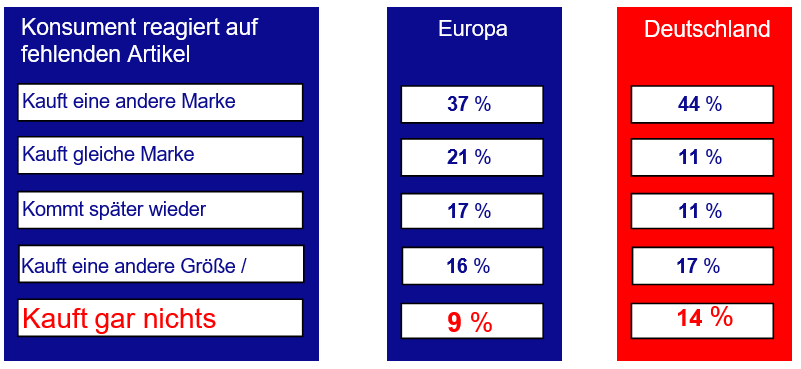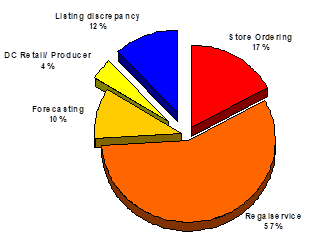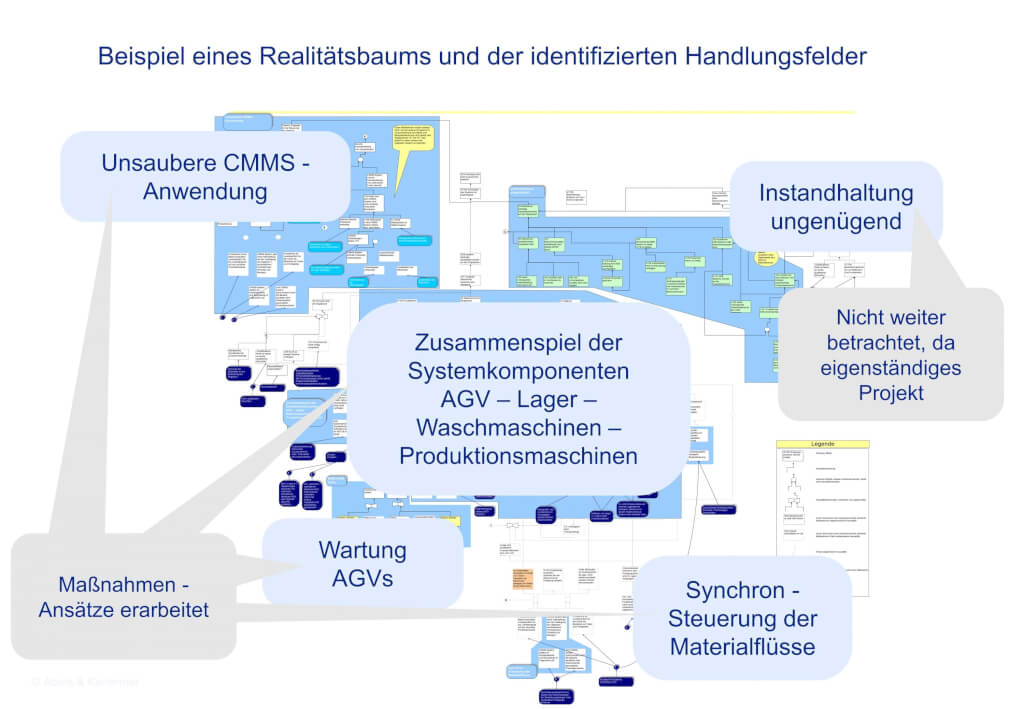Reducing stocks without the risk of out-of-stock – a contradiction?
The retail sector has considerable inventory reduction potential that needs to be identified and leveraged. High stock levels both in the central warehouses and in the outlets are an attempt to cover up weak points in the processes that cause bottlenecks, out-of-stocks and delivery delays. With better scheduling support, considerable inventory reduction potential could be tapped, especially in the SME sector, without jeopardizing delivery capability.
On average, 13% of retail sales are tied up in inventories. This results in an inventory range of well over one month. However, the resulting considerable cost reduction potential is often not recognized and lies dormant in retailers’ warehouses. This is astonishing when you consider the weak margins in this sector.
A decisive argument against reducing stock levels in the retail sector is certainly the fact that, despite modern logistics and ERC (Efficient Consumer Response) systems, stock-outs (gaps between shelves) still frequently occur in retail outlets. However, studies show that the main causes of stock-outs are usually found in the last 10 meters to the shelf. Consequently, they cannot be improved by optimizing the supply chain or by increasing stocks upstream in the supply chain.
Missing items on the shelf lead to lower sales for retailers and manufacturers. According to studies, consumers very often switch brands rather than shopping locations if the desired product is not available on the shelf. However, if you look at the nine percent non-purchase rate, the European food retail trade, and therefore also manufacturers, lose over EUR 4 billion in sales every year due to items not being available on the shelves.
But why are many retail outlets unable to make sufficient deliveries? Studies show (e.g. OSA study Roland Berger 2003) that the area of “in-store logistics” (store ordering, shelf service) is a disproportionately high cause of errors. The most important causes here:
- Lack of staff for shelf stocking
- Poor warehouse organization
- Rare out-of-stock checks on the shelf (exception processing)
- Lack of shelf labels – Insufficient assortment implementation
- Incorrect book inventories
- Order triggered too late or not at all

A look at purchasing behavior makes it clear how important product availability at the point of sale is for customers. As many as 9% of customers in European retail stores do not buy anything if the desired item cannot be found on the shelf. (Source: ECR Europe)
This means that almost three-quarters of the identified shelf gaps occur within the store’s sphere of influence. 10% are due to the connected ERP system (scheduling and forecasting system) with incorrect forecasts, excessive minimum order quantities or incorrect parameterization at item and supplier level. Only 4% of the shelf gaps investigated were due to delivery errors by the manufacturer and 12% were caused by listing discrepancies! These figures show that incorrect disposition mechanisms at manufacturers and retailers are responsible for only 14% of out-of-stocks. However, they are responsible for a good 80% of the existing surplus stocks.
Incorrect scheduling mechanisms are responsible for 80% of overstocks in the supply chain and still account for 14% of out-of-stocks.
As further studies show, increasing stocks in order to achieve delivery readiness is the wrong approach for the right solution. Manufacturers and retailers who manage their supply chain efficiently tend to achieve lower out-of-stock rates with significantly lower inventories, as studies by ECR Europe show…

Low stock levels and high delivery readiness are not a fundamental contradiction in retail either. However, the goal of low capital commitment can only be achieved if the right approaches are used. At this point, greater attention should be paid to two fields of action: Demand and sales forecasting and scheduling optimization. While planning mechanisms can still be significantly improved throughout the retail sector, SMEs in particular still have some homework to do in the area of sales and demand forecasting.
Modern simulation systems, such as DISKOVER SCO, can now be used to simulatively optimize and operationally support rules for the item-specific setting of scheduling parameters and forecasting mechanisms. Delivery readiness and stock levels in the warehouse and supply chain can thus be balanced on a company-specific basis and continuously readjusted.

Conclusion
It is not too little stock in the supply chain from the manufacturer to the retailer’s store, as is often assumed, but incorrect organizational processes in the stores that cause 70% of all availability problems on the shelves. On the contrary, inventories in the supply chain represent untapped potential for reducing working capital and lowering trading costs.
In numerous projects on the analysis of overstocks, Abels & Kemmner has been able to prove time and again that the correct parameterization of the control variables of the existing scheduling system alone has enabled 75% of companies to achieve a stock reduction of more than 20% with the same degree of delivery readiness.
In the tough competition between retailers, the ability of companies to manage and monitor their inventories will therefore become increasingly important in the future.

